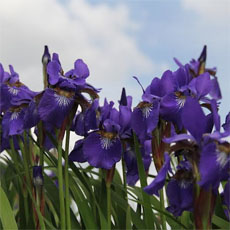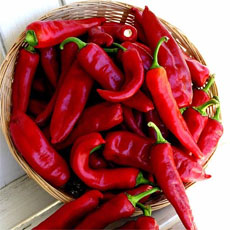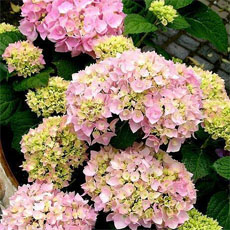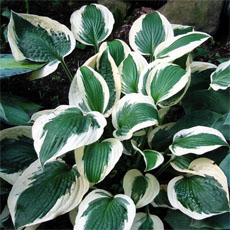Elberta, Alabama
Gurley, Alabama
Jones, Alabama
Mobile, Alabama
Saraland, Alabama
Phoenix, Arizona
Benton, Arkansas
Chino Hills, California
Long Beach, California
NORTH FORK, California
Ontario, California
Placentia, California
Colorado Springs, Colorado
Denver, Colorado
Golden, Colorado
Chester, Connecticut
Big Pine Key, Florida
Deltona, Florida
Fernandina Beach, Florida
Fort Lauderdale, Florida
Holiday, Florida
Interlachen, Florida
Jacksonville, Florida(2 reports)
Kathleen, Florida
Keystone Heights, Florida
Kissimmee, Florida
Lakeland, Florida
Largo, Florida
Marathon, Florida
Milton, Florida
Orlando, Florida
Palm Coast, Florida
Pompano Beach, Florida
Saint Petersburg, Florida
Sebring, Florida(2 reports)
Tampa, Florida
Venice, Florida
West Palm Beach, Florida
Winter Springs, Florida
Cochran, Georgia
Hawkinsville, Georgia
Milledgeville, Georgia
Royston, Georgia
Stone Mountain, Georgia
Kurtistown, Hawaii
Moscow, Idaho
Glen Ellyn, Illinois
Jacksonville, Illinois
Oak Lawn, Illinois
South Bend, Indiana
Sioux City, Iowa
Parsons, Kansas
Dawson Springs, Kentucky
Tompkinsville, Kentucky
Baton Rouge, Louisiana
Denham Springs, Louisiana
New Iberia, Louisiana
Ruston, Louisiana
Slidell, Louisiana
Westlake, Louisiana
Zachary, Louisiana
Aberdeen, Maryland
Glen Burnie, Maryland
East Longmeadow, Massachusetts
Central Lake, Michigan
Constantine, Michigan
Mosherville, Michigan
Warren, Michigan
Minneapolis, Minnesota
Long Beach, Mississippi
Saucier, Mississippi
Bellevue, Nebraska
Syracuse, New York
Henderson, North Carolina
Lucama, North Carolina
Pittsboro, North Carolina
Raleigh, North Carolina(2 reports)
Wilsons Mills, North Carolina
Belfield, North Dakota
Medora, North Dakota
Bucyrus, Ohio
Council Hill, Oklahoma
Owasso, Oklahoma
Stillwater, Oklahoma
Coos Bay, Oregon
Gold Hill, Oregon
Downingtown, Pennsylvania
Millersburg, Pennsylvania
San Juan, Puerto Rico
Columbia, South Carolina
Ladys Island, South Carolina
Prosperity, South Carolina
Summerville, South Carolina
Sumter, South Carolina
Murfreesboro, Tennessee
Austin, Texas
Big Sandy, Texas
Brownsville, Texas
Dallas, Texas
Fort Worth, Texas(2 reports)
Georgetown, Texas(2 reports)
Houston, Texas
Lumberton, Texas
Midlothian, Texas
Odessa, Texas
Port Lavaca, Texas
Richmond, Texas
San Antonio, Texas
Santa Fe, Texas
Victoria, Texas
show all






















































Sometimes a pest where I've lived in Idaho & California, but more often a welcome groundcover (very low to ground, NO KILLER AWNS OR BURS...Read More
I wonder why my Purslane has stopped flowering - I have red and bright yellow plants in hanging baskets .I am in India and in Zone 12 (US...Read More
The Common Purslane is a common, widespread succulent annual weed in gardens. It does not have conspicuous flowers. It originally came fr...Read More
It is amazing that after 43 years of living in Phoenix, AZ I am just learning about this plant (WEED). The amazing nutritional value & Om...Read More
Most of the photos posted under this name are garden cultivars of P. umbraticola. There is nothing "anonymous" about them. Also they are ...Read More
Yes this entry is THE edible wild purslane!
There are several pictures under this entry that are DEFINITELY NOT P. oleraceae!
...Read More
I just love this colorful plant. It is about the only plant that will grow well in my sunny flower box that relies on hand watering or ra...Read More
Portulaca oleracea, Purslane or Glistritha, pronounced ghlee-STREE-thah (hard "th" sound) has been used in Greek cooking for millenia. Tr...Read More
The purslane from the vendor listed at the top, Territorial Seed, does not sell the wild purslane, but Golden purslane.
once i learned how nutritious this plant is, i stopped weeding it. thus it becomes a living mulch under most of my vegetables, and grows ...Read More
Portulaca oleracea is one of the richest source of non-fish EPA Essential Fatty acids (Omega 3's) on earth.
The entire pla...Read More
A noxious weed. In my garden I call it the "scourge of summer"!
I consider this weed on the 10 worst weed for me. They loves to appear where there are sun in my yard and anywhere there are a little exp...Read More
What a wonderful suprise it was when I saw for the first time on backyard! It's one of my favorite vegetables ever. They are so delicious...Read More
I like this tasty little salad plant. It's also great sauted with ground meat and tomatoes. And it is a valuable plant in erosion control...Read More
In added support of this plant that many people unfortunately classify as a garden pest, though not among most of the people of this grou...Read More
Fantastic, low maintenance plant. Love how it blooms from 9-5 and always seems to have lots of blooms!
I have the wild kind growing everywhere, and reseeds all over the place. It's one of my worst weeds. It's easy enough to pull, but ther...Read More
Wild pursalane has come up all over this town, in flower beds, cracks in sidewalks, and I have yet to hear a positive comment on it....Read More
I "pruned" a couple of leggy stems from this plant at one of the large garden centers, stuck it in the dirt in my garden, and it bloomed ...Read More
I have not grown this plant but my sister-in-law has and she lives nearby. We live in a very rainy area but plant them with excellent dra...Read More
The wild weed type also goes by the name of 'verdolaga' in the grocery stores.
I love it's large flowers! mine are red, and it is very easy to gather seeds, I wonder if I will be able to grow it from seed.
The plants in these pictures are not the true wild portulaca, they are the cultivated form of Portulaca oleracea. The wild form has smal...Read More
I love this little plant but the squirrels love it too. They eat it all up. Very easy to grow. Little to no care. Easy to root, just ...Read More
Wonderful plant that does NOT need lots of water. Will grow in places nothing else will grow. Beautiful and will fill out quickly. Can...Read More
San Antonio, TX
NOTE: THE FOLLOWING IS A DESCRIPTION OF WILD PURSLANE NOT THE HYBRIDS USED AS GARDEN PLANTS. NEUTRAL RAT...Read More
I live in West Texas where it is very hot and dry. Purslane seems to thrive here. The birds eat my moss roses down to the numb, but don't...Read More
EXTREMELY easy to root. Break off a stem with a bloom, put it in water to root (takes only about a week). The cutting just keeps right on...Read More
This plant has been so prolific, that I've given many cuttings away, and rooted even more for more small gifts. I have one that is in a ...Read More
I love this plant. So many different colors to choose from. This year however, I'm having problems with my perfectly healthy 10" baskets ...Read More
What a wonderful find for sunny Florida. Purslane blooms during the day and the flowers close up at night. The blooms are brilliant. The ...Read More
This is the first plant I tried to grow, even though it was accidental (it started growing in an abandoned vase in my window, and I didnĀ...Read More
Purslane is an excellent plant. The wild form is a formidable pest for farmers in the midwest. When I worked on a small farm in Wisconsin...Read More
This is a great plant for hanging baskets, pots, or as ground cover. Purslane loves the heat and is very drought tolerant. This is a pl...Read More